Our AmaWaterways guide, Dina Talaat, is leading us through the soaring entrance to the Temple of Horus, one of the best-preserved ancient structures in all of Egypt, when we get our first glimpse of something truly wondrous.
And it isn’t just the colossal courtyard on the other side of the entrance — although “wondrous” is a good word to describe that, too. The 2,200-year-old space is lined on three sides by 32 towering columns and features spectacular golden-hued stone walls covered in reliefs depicting the Egyptian gods Horus and Hathor.
What is truly wondrous is that the courtyard, as well as the massive inner temple just beyond, is almost completely devoid of people. Our small group of a few dozen passengers from AmaWaterways’ latest Egypt-based river ship, AmaLilia, has one of the most famous and often-crowded sites in the country almost to ourselves.
This isn’t by accident.
California-based AmaWaterways, which brought us here as part of a seven-night Nile River cruise on AmaLilia, has carefully crafted the vessel’s itinerary to avoid the worst of the crowds that are common at Egypt’s best-known sites.
It is just one of several things that sets this voyage on the new vessel apart from the sailings on many of the other ships on the Nile.
Paired with four days of land-based touring to create an extended 11-night trip through Egypt, the voyage offers one of the highest-end onboard experiences you can find on the Nile, which is home to more than 200 cruise vessels.
Additionally, it is a highly inclusive sailing, with just about every aspect of the experience — from lodging, meals and expert-led guided tours to special access to iconic sites like the tomb of the pharaoh Tutankhamun — included in the fare.
Visiting the pyramids in style
Aimed at the same sort of history-loving travelers who get excited about visiting the ancient ruins of the Roman and Greek empires, AmaWaterways’ trips on the new AmaLilia are, like most organized tours of Egypt, an opportunity to get up close to the remnants of what some consider the greatest civilization of all time: ancient Egypt.

Reward your inbox with the TPG Daily newsletter
Join over 700,000 readers for breaking news, in-depth guides and exclusive deals from TPG’s experts
But more than most organized tours of Egypt, they are designed to offer a high-end and seamless experience from start to finish.
Even before we reached AmaLilia, we were plunged into luxury during a precruise stay at The St. Regis Cairo, one of the Egyptian capital’s most elegant hotels.
Sitting at a prime location along the Nile, the 4-year-old luxury retreat was designed by famed architect Michael Graves. It’s home to sumptuous rooms with Frette linen-covered beds and marble-lined bathrooms, a ritzy outdoor pool area overlooking the river, a lovely spa and some of Cairo’s best restaurants.
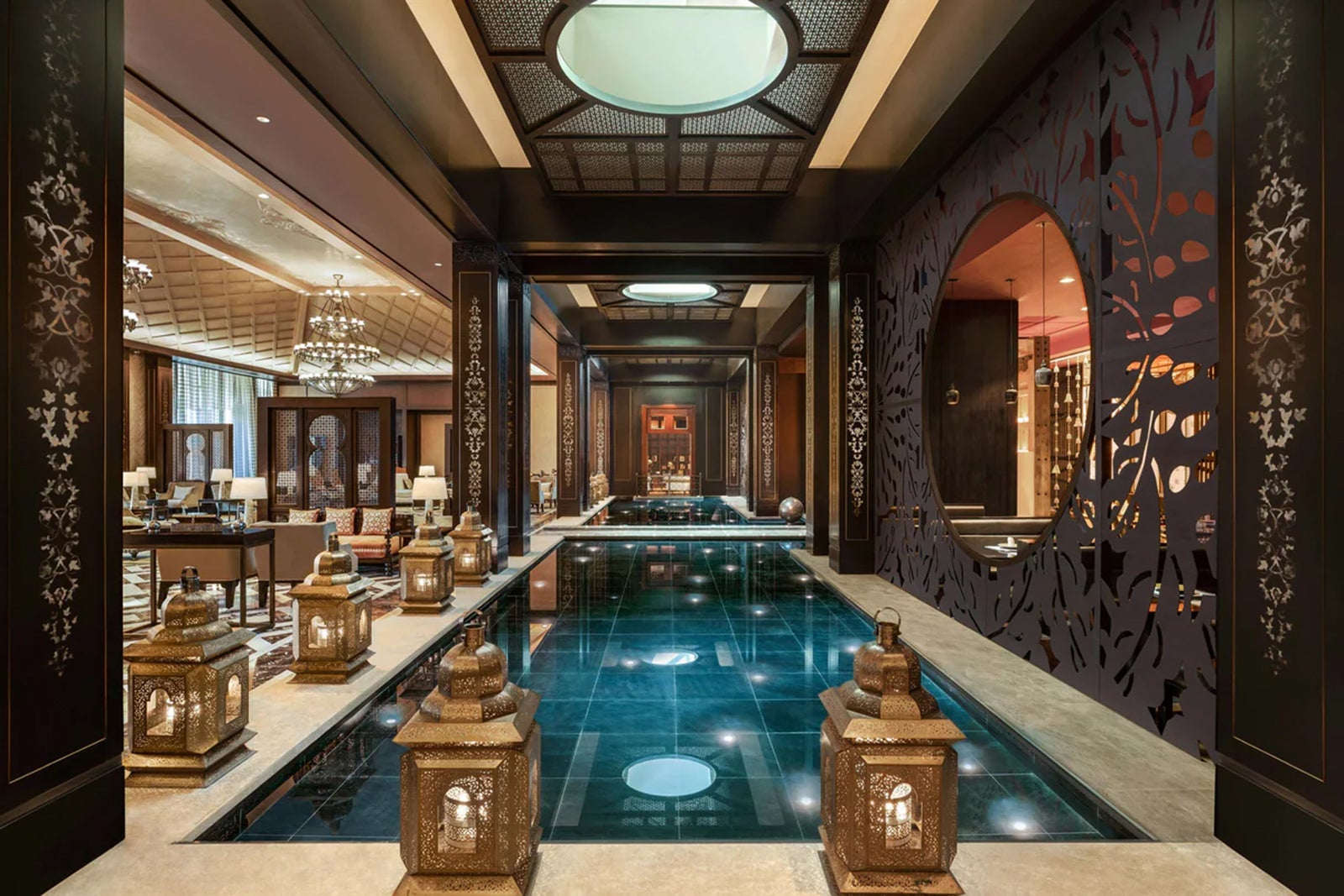
We didn’t get to spend all that much time experiencing the hotel’s luxurious offerings, though. During our three-night stay, we spent more of our waking hours away from The St. Regis than in it, as we began a deep dive into the history of Egypt from the era of the pharaohs to modern times.
Led by Talaat, an expert Egyptologist who accompanied us for the entire 11-night trip, we spent a full day exploring three of the most famous historic sites in all of Egypt. We saw the famed Pyramids of Giza and the Great Sphinx of Giza, which are just outside of Cairo, where the city meets the desert. We also saw the older Saqqara pyramids several miles away.
At our first stop, the Saqqara pyramids, Talaat led us to the massive 4,700-year-old Step Pyramid of Djoser. She explained that it was not only the first pyramid built in Egypt but the first monumental stone structure built by humans anywhere in the world.
1 of 5
TPG’s Gene Sloan at the Step Pyramid of Djoser in Egypt. GENE SLOAN/THE POINTS GUY
In that respect, its construction was one of the great milestones in human history.
It’s a history we experienced viscerally as we descended a narrow tunnel into another nearby pyramid built for the pharaoh Unas. It deposited us into a three-room tomb covered in ancient hieroglyphics — the oldest funerary texts ever found in an Egyptian tomb.
Related: The ultimate guide to Nile river cruises
That was just the appetizer for the main course of the day: a visit to the Pyramids of Giza. Built about 100 years after the Step Pyramid of Djoser, the Giza pyramids mark the height of pyramid building in Egypt. Even to the most jaded world travelers among us, they are a sight to behold.
At 481 feet high, the largest of the pyramids, known as the Great Pyramid of Giza, is stunning in its massiveness. Some of us experienced it firsthand by scrambling up the long (and, at times, claustrophobically small) passageways to its central burial chamber. At about $30 per person, this was one of the few extra-charge activities on the trip.
1 of 5
The Pyramids of Giza near Cairo. GENE SLOAN/THE POINTS GUY
It is here that we found the giant granite sarcophagus of the pharaoh Khufu — so big that it’s permanently stuck within the pyramid.
Alas, the burial chamber was stifling hot and stuffy, so we stayed just long enough for a few selfies. Awaiting us was another AmaWaterways-organized (and included) luxury experience: lunch at the historic Marriott Mena House, Cairo, which looks out over the pyramids.
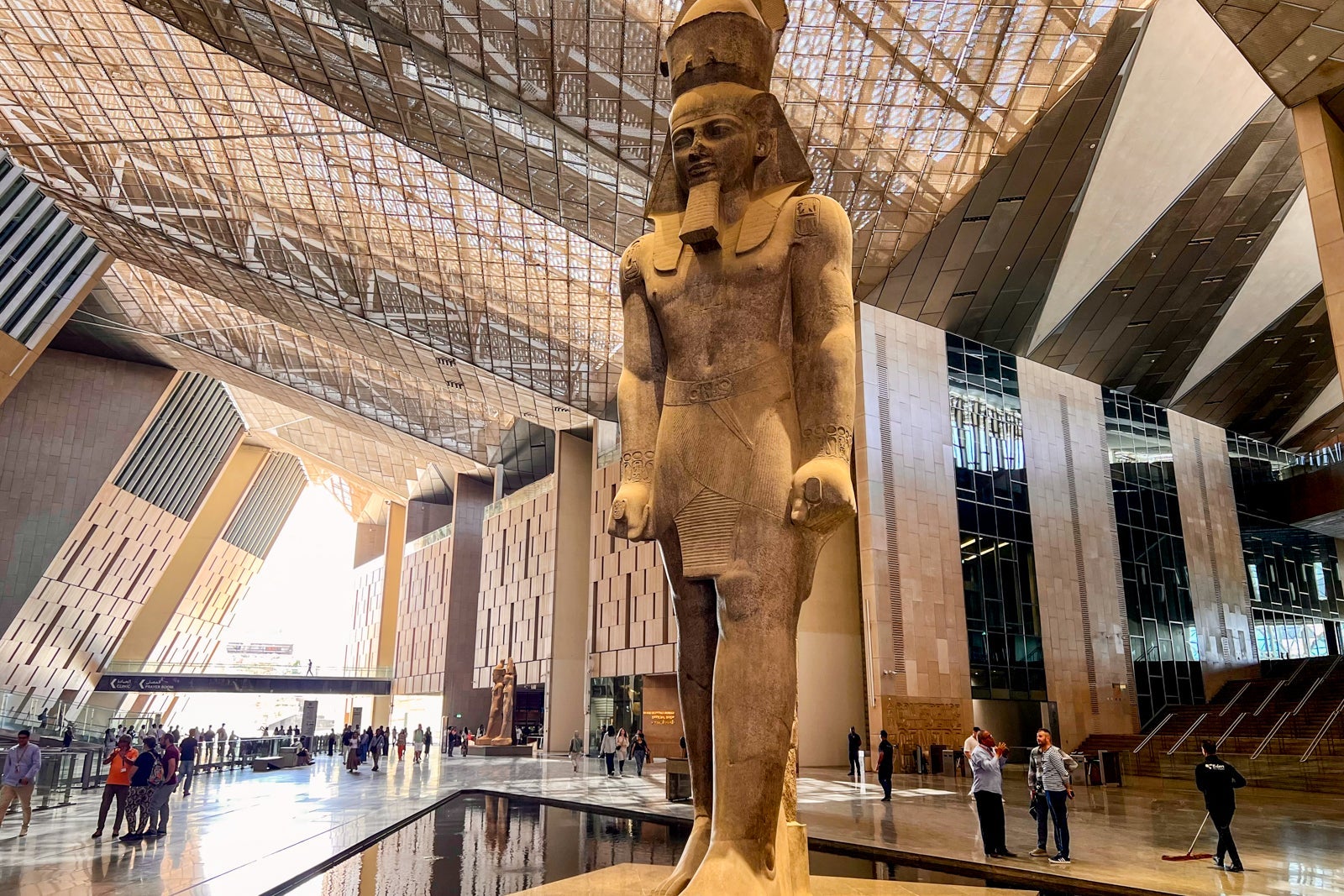
After lunch, we visited the just-opened Grand Egyptian Museum, where we learned that all of these giant pyramids date to the Old Kingdom of Egypt that came to an end more than 4,000 years ago.
For the next part of our trip, aboard AmaLilia, we would catapult forward in time to visit sites that, while not as soaring as the pyramids, represent another golden age in ancient Egypt’s history.
An expert-led journey through time
Like most of the river ships that sail the Nile, AmaLilia is based not in Cairo but hundreds of miles to the south in Luxor. This was the center of ancient Egypt during what was known as the New Kingdom (when it was called Thebes).
After checking out of The St. Regis Cairo — and spending a morning touring historic Old Cairo with its ancient churches — we flew as a group on one of the many daily commercial flights from Cairo to Luxor. There, buses awaited to whisk us to the ship.
What followed were seven days of touring some of ancient Egypt’s best-known historic sites. We also had some relaxing downtime on AmaLilia, as the vessel sailed the 130-mile stretch of the Nile from Luxor south to Aswan and back.
It is a stretch that offers a glimpse of nearly 2,000 years of Egyptian history. One day, we were descending into the tombs of the pharaohs at the Valley of the Kings, a New Kingdom site that dates back more than 3,500 years. The next day, we were gawking at the carved relief of Cleopatra at the Temple of Horus, which was built more than 1,000 years later during Egypt’s Ptolemaic period.
1 of 6
AmaWaterways arranges entry to the tomb of Tutankamun in the Valley of the Kings for AmaWaterways passengers. GENE SLOAN/THE POINTS GUY
It was only through the expert explanations of our guide, Talaat, that such an enormous span of history started to become comprehensible.
At the sprawling Temple of Hatshepsut, near the Valley of the Kings, she walked us through royal mother-turned-pharaoh Hatshepsut’s rise to become one of the first and most powerful female rulers of Egypt. At the Temple of Kom Ombo, which was built centuries later during the Greco-Roman period, she pointed to a giant relief of the Roman emperor Tiberius portrayed as a pharaoh to explain the relationship between the Roman Empire’s rulers and Egypt at the time.
1 of 2
The Temple of Hatshepsut near Luxor. GENE SLOAN/THE POINTS GUY
We stopped at Aswan, which is as far south on the Nile as river ships can go. (They are blocked from going further by the 55-year-old Aswan High Dam and an older British-built dam.) There, Talaat brought us by boat to a Nubian village to learn more about the distinct ethnic group that has been living in the region for thousands of years.
A floating boutique hotel
Luxury on the level of The St. Regis Cairo is hard to find on the Nile. The shipbuilding industry in Egypt isn’t as sophisticated as it is in Europe. Even the finer vessels on the river sometimes show signs of poor workmanship in places and a lack of high-end finishings and furnishings. But relative to what else is available, AmaLilia is one of the higher-end vessels on the river.
Home to just 41 rooms, the four-deck-high ship has a boutique hotellike feel. In addition to often spacious accommodations (nearly a third of its cabins measure more than 400 square feet, which is twice the size of the typical cruise ship cabin), its interior areas offer a cozy lounge and bar, two restaurant spaces, and a small spa and fitness center.
There’s also a stylish pool deck with elegant shaded lounge areas and a bar up top.
1 of 6
AmaLilia has a cozy lounge with a bar that looks out over the river. NOUR EL REFAI/AMAWATERWAYS
My cabin — a luxury suite measuring 430 square feet — was among the most spacious and comfortable that I have seen on a Nile River ship. It featured a sitting room separate from the bedroom area, a large bathroom with both a bathtub and a shower, and a full outdoor balcony — a rarity on river ships in Egypt.
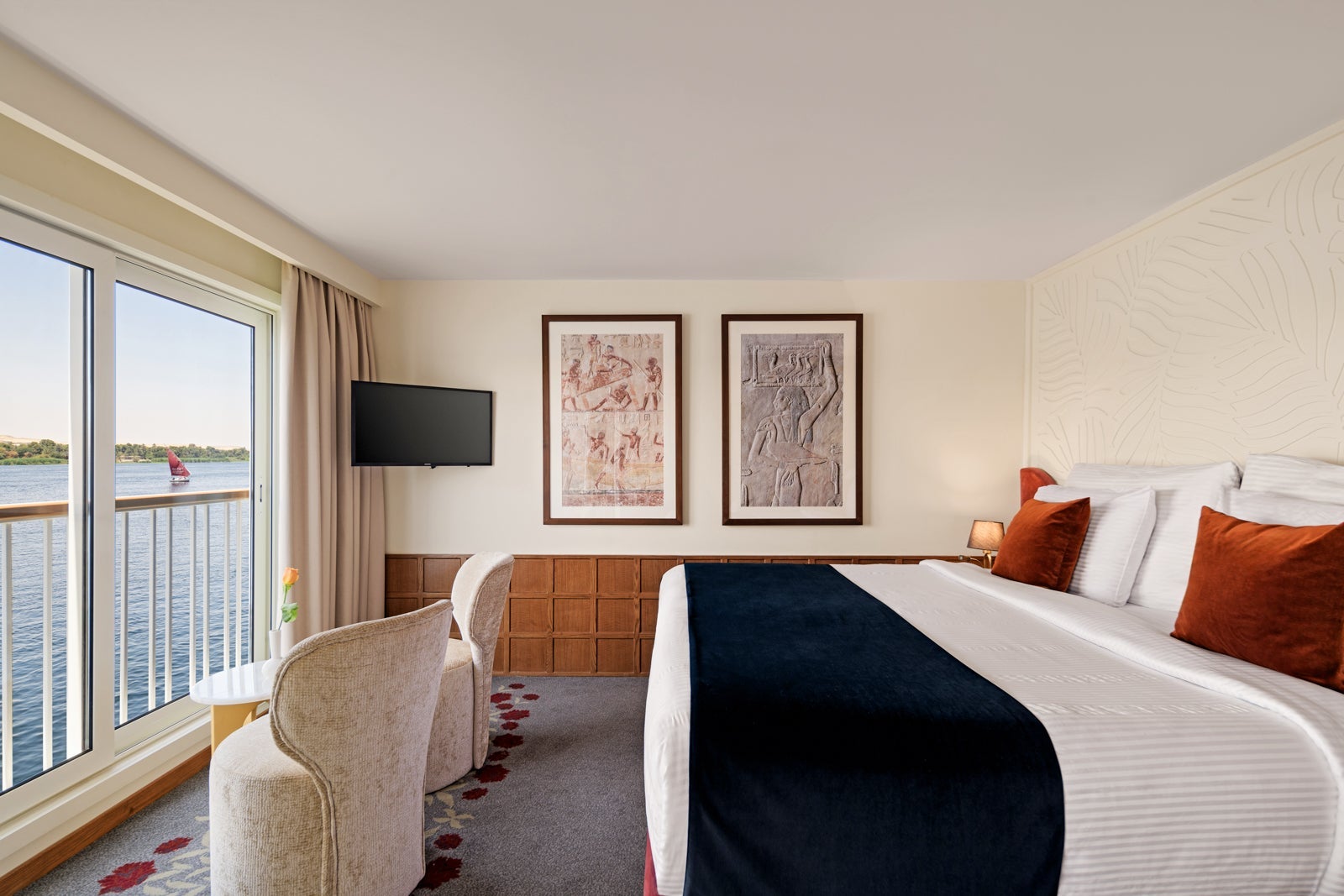
Still, perhaps the most upscale touch of the vessel is the service level that it offers. An inordinately large crew of 65 people is on hand to serve at most 82 passengers (the ship’s maximum capacity), so there’s never a lack of staff to cater to your every whim.
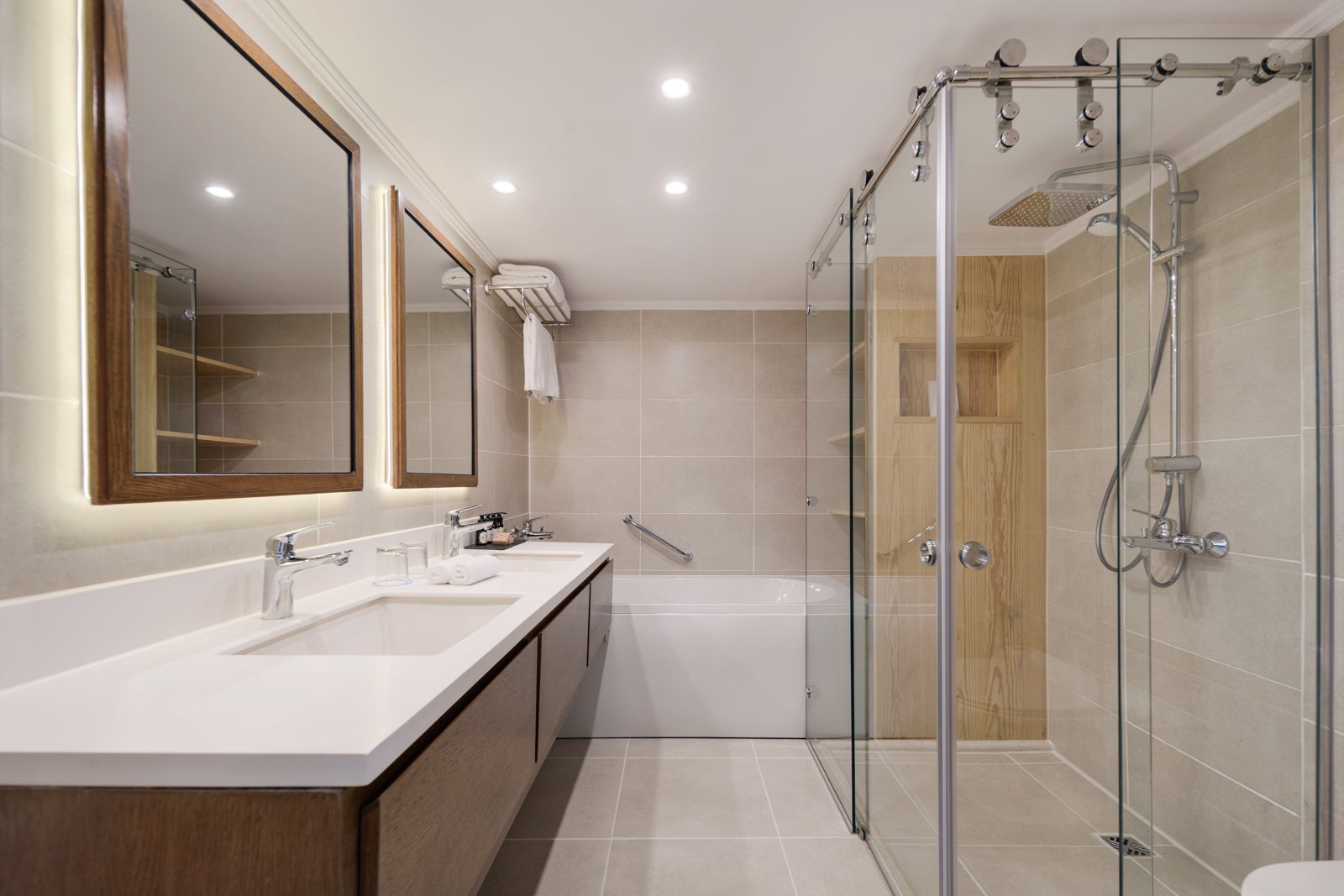
I saw this service level firsthand during my sailing when my traveling companion felt queasy for a day (a common affliction for travelers in Egypt) and was pampered by the staff in a way that I have rarely seen on a ship. AmaLilia’s hotel manager and cruise manager personally took her well-being into their hands, getting her medicine and sending a specially cooked array of bland foods like rice, soup and toast to our room to speed her recovery. She was better within a day.
As noted above, there is a lot of downtime built into the sailing, giving passengers a chance to enjoy all the ship has to offer. On many days, a morning of intensive touring at ancient Egyptian sites is balanced with an afternoon of relaxing on board as the vessel sails past the rural towns and farmland that line the Nile between the bigger cities.
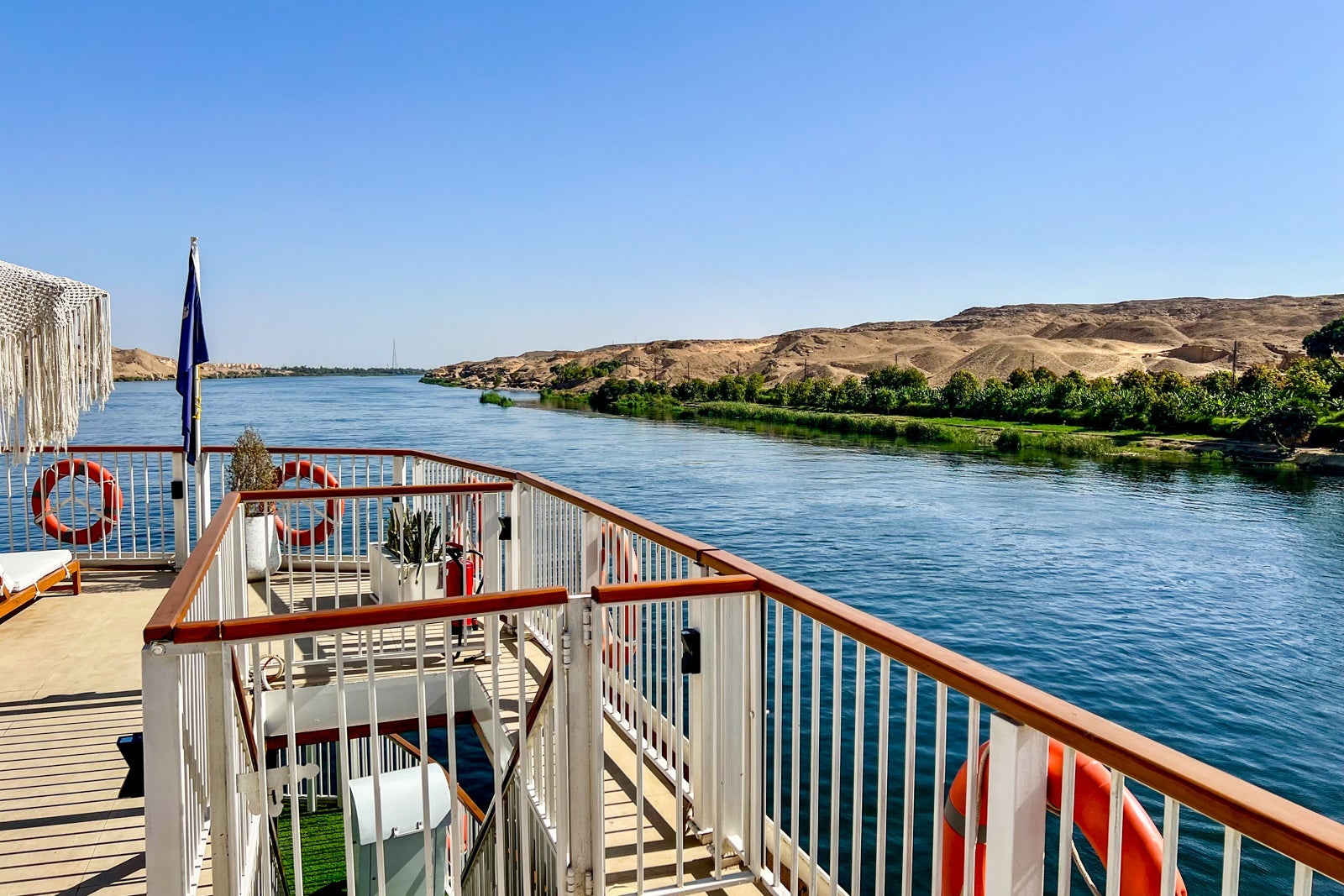
On the Nile, this laid-back pace of exploring is its own sort of luxury. Most Nile River ships operate three- and four-night cruises on the section of the river between Luxor and Aswan that are frenetic in their pacing, with jam-packed and exhausting days of touring historic sites.
AmaLilia is one of a small number of vessels on the Nile that slows the experience down by spreading it out over a seven-night time span. This allows for not just a more comfortable experience but a more in-depth experience, and one that can be designed specifically to avoid site visits during the most crowded times.
Related: The ultimate guide to river cruises around the world
Because of the longer sailings, the ship can visit some sites that vessels on shorter sailings don’t visit, including the spectacular Temple of Hathor near Qena, an Egyptian town that is farther north than most ships go.
On the day we visited the Temple of Hathor, famous for spectacular wall reliefs that have survived for more than 2,000 years, only one other small vessel was docked in Qena. This was an almost unheard-of emptiness on a river where dozens of vessels can sometimes be docked in the same place at the same time.
A seamless, all-inclusive experience
As is often the case with the highest-end tours of Egypt, our visit to Qena and other towns and cities along the Nile was a highly choreographed affair. Everything from transfers to the sites to break times for meals was meticulously planned for the ultimate seamless experience.
Moments after AmaLilia docked in Qena, our guide Talaat, along with a second AmaWaterways guide and a cruise manager, met us in the ship’s lobby. They led us to two motorcoaches that quickly took us a few miles away to the entrance of the Temple of Hathor.
Once there, they sped us through the site’s entrance, handing each of us an entry ticket that they had bought in advance just before we went through the turnstiles. They then led us through the site, transmitting detailed explanations of everything we saw into our ears through Quietvox devices that they had given us for the duration of the trip.
1 of 5
AmaWaterways passengers arrive at Temple of Hathor. GENE SLOAN/THE POINTS GUY
It was a two-hour morning tour timed perfectly to end in time for the elegant lunch that AmaLilia’s onboard chefs were preparing for our return. We walked back on the ship just as the doors to the restaurant were opening.
It was the sort of seamless experience that we had enjoyed from the moment we arrived in Egypt, when an AmaWaterways representative met us moments after we walked off our airplanes, even before we cleared customs. Helping us with our bags and navigating us through the customs process, this guide brought us straight to an awaiting car for the drive to The St. Regis; the guide stayed with us until we were safely inside the hotel and had our keys to head up to our room.
Unlike with some tours of Egypt, Talaat and our group’s other tour guide and cruise manager stayed with us for the entire trip, including during our time at The St. Regis and our days on board AmaLilia.
A pricey voyage
As is typical for higher-end tours of Egypt, sailings on AmaLilia don’t come cheap.
Eleven-night trips that include a week on board the vessel and four nights at a hotel in Cairo currently start at $5,779 per person, based on double occupancy (in other words, nearly $12,000 for a couple sharing a room). And that’s the price for an entry-level cabin on the vessel that only has fixed windows and no balcony.
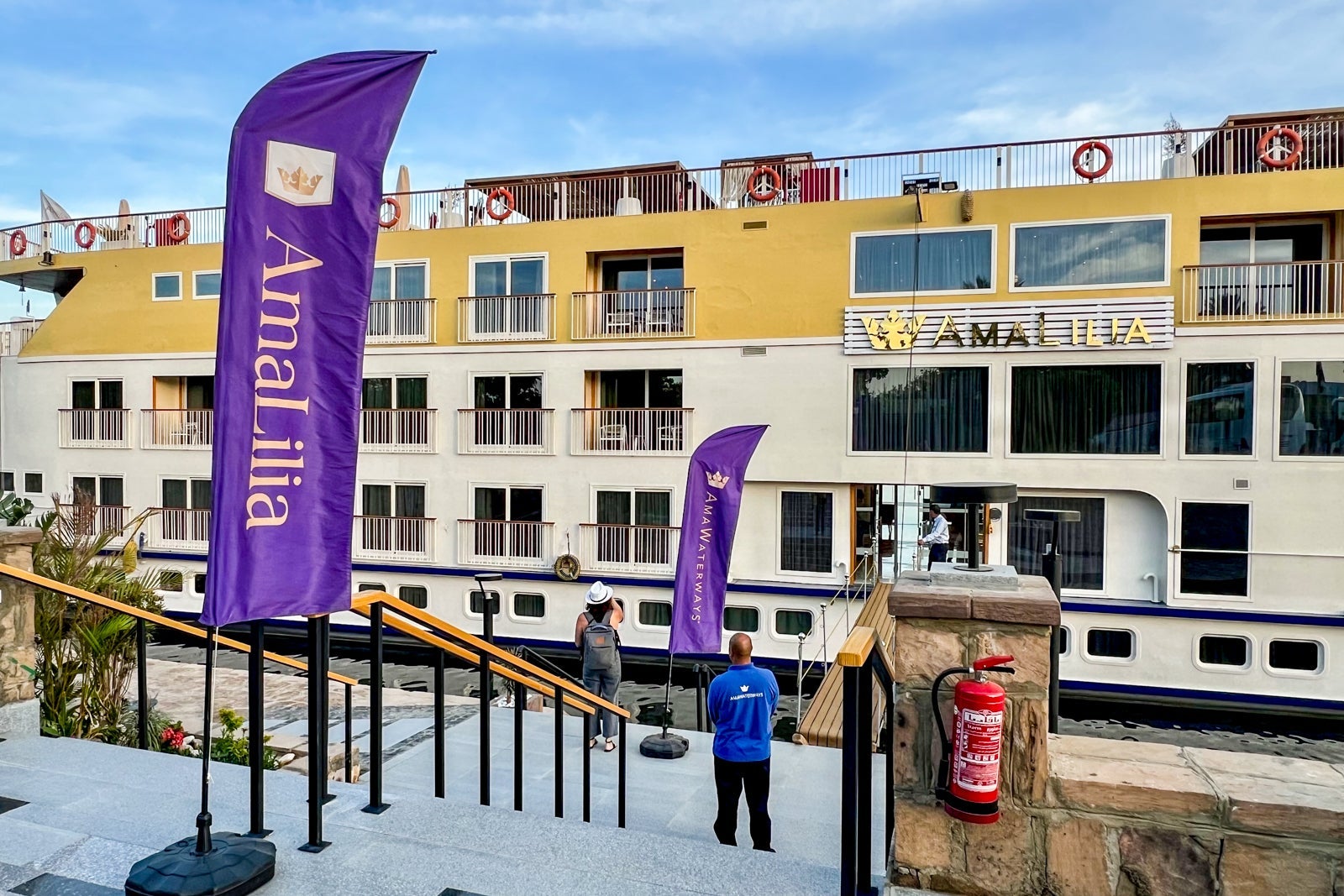
To get a similarly sized cabin with a “French balcony” window that opens to the outside, you’ll find starting rates around $7,300 per person (or $14,600 per couple). Staying in one of the vessel’s bigger suites could set you back more than $25,000 per couple.
That said, such fares are highly all-inclusive. Not only are your ship and hotel rooms included in the price, but most of your meals (along with beer and wine with lunch and dinner while on the ship) are covered as well. You also get extensive guided tours to all the main sites every day of your trip. The latter is a significant value, given the cost and logistical headaches of booking tours in Egypt on your own.
The fares include the interior flights in Egypt that will get you from Cairo to Luxor for your cruise and back; they also include the transfers between the Cairo and Luxor airports to both your hotel in Cairo and the ship in Luxor.
Bottom line
River line AmaWaterways’ new ship on the Nile, the 41-cabin AmaLilia, is a top choice for sailings on the river. Operating seven-night voyages that are paired with four nights at a hotel in Cairo to create an 11-night Egypt trip, it is one of the finer vessels on the river, and it offers a high-end, seamless and all-inclusive experience.
Planning a cruise? Start with these stories:
Source link









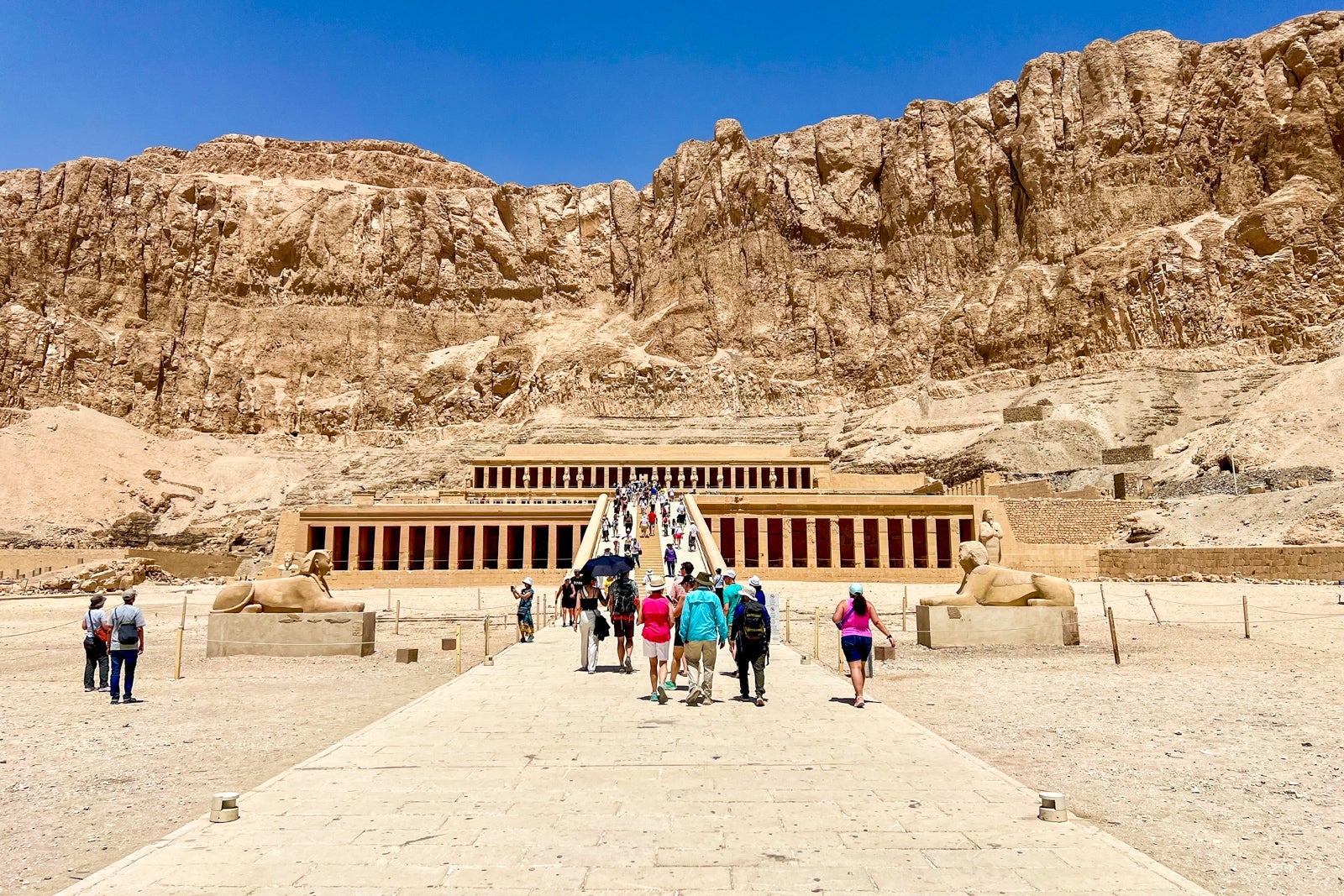
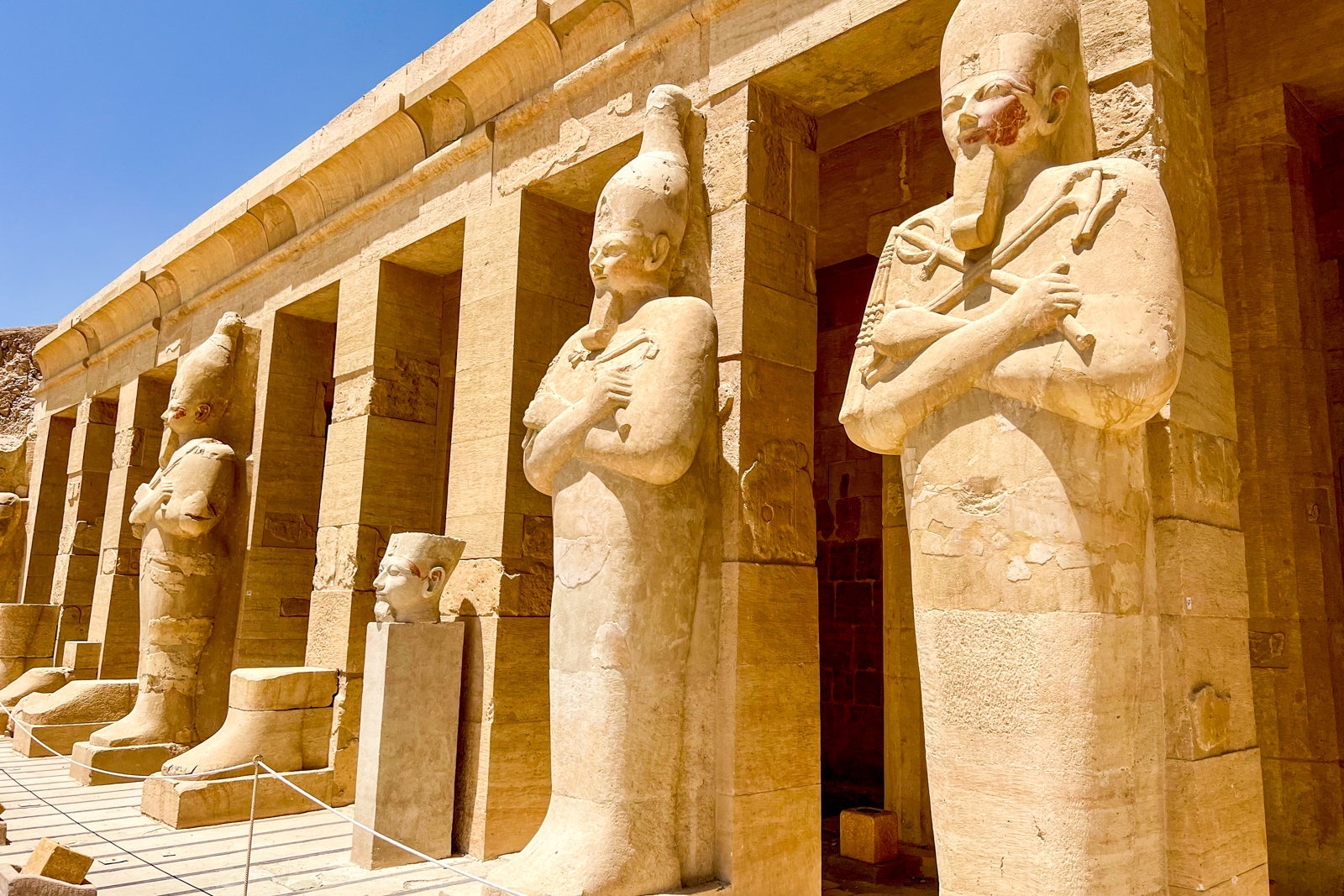








Add Comment